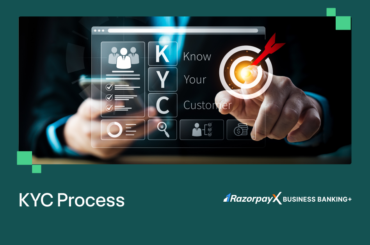Revenue based financing (RBF), or royalty-based financing, is a way for businesses to raise capital without putting equity or collateral on the line.
If you’re a business owner looking for a non-dilutive, risk-free way of raising capital, revenue-based financing might be for you.
How Does Revenue-Based Financing Work?
In a typical RBF model, investors provide capital to businesses in exchange for a percentage of their ongoing gross revenue.
The investor provides a lump sum of capital to the business, and instead of fixed monthly payments, the business pays back a predetermined percentage of its gross revenue each month.
This percentage typically ranges from 5% to 10% but can vary depending on the deal terms.
Since revenue-based financing requires trust and transparency on both sides of the transaction, it can be wise to route transactions through an escrow account.
The flow of funds in a revenue-based financing transaction goes as follows:
 Benefits of Revenue Based Financing
Benefits of Revenue Based Financing
- Flexible and aligned: Payments scale with revenue, making it manageable during low-revenue periods.
- Faster access to capital: Compared to traditional financing, the process is often quicker and less demanding.
- Maintains ownership: Founders retain full control over the company’s decisions and direction since equity ownership is not diluted.
- Focus on growth: Investors incentivized by revenue success, encouraging growth initiatives.
Risks in Revenue Based Financing
- Higher effective interest rate: The total amount paid back can be higher compared to traditional debt due to the ongoing revenue share.
- Limited investment size: Available funding amounts tend to be smaller than conventional financing options.
- Exit possibilities: Different structures may impact future fundraising rounds or exit strategies.
- Need for disclosures: Some investors may take a high level of interest in the business and may require full transparency and disclosures.
How does RazorpayX Escrow+ close gaps in revenue based financing? Speak with our experts.
Is Revenue-Based Financing Right For You?
If you fulfil most of the following requirements, revenue-based financing might be the right fit for your capital needs.
✅ Consistent and upward revenue growth with a predictable revenue model, like SaaS, D2C, e-commerce
✅ Seeking capital for rapid growth
✅ Unwilling to engage with traditional funding
✅ Desire to avoid diluting equity and maintain full control over business
✅ Confident in ability to scale and generate increasing revenue
However, if your business checks these following boxes, enter into a revenue-based financing deal with caution.
❌ Need for large funding amounts, since RBF deals are typically for smaller amounts.
❌ Unpredictable or volatile revenue may make payments inconsistent and lead to investor concerns
❌ Unwillingness to share financial data; since RBF deals require high levels of transparency
❌ Looking only for short-term growth; since RBF is more suited to long-term goals
Revenue-Based Financing Term Sheet
A crucial part of an RBF agreement is the revenue-based financing term sheet. It is a blueprint outlining the principal amount, fees and repayment schedule as decided between the investor and the business.
Here are the components of an RBF term sheet.
- Funding amount: The total amount of capital the business will receive from the lender.
- Revenue share percentage: The percentage of gross revenue the business will pay back to the lender each month. This typically ranges from 5% to 10% but can vary depending on the deal.
- Minimum payment: A guaranteed minimum amount the business must pay each month, even if their revenue falls below a certain threshold. This provides the lender with some security.
- Repayment period: The timeframe within which the business must fully repay the funding and revenue share.
- Fees: Additional charges associated with the financing, such as origination fees, transaction fees, and late payment fees.
- Investment covenants: Certain conditions or milestones the business must achieve to remain in good standing with the lender.
- Exit strategy: Provisions outlining how the business can ultimately “graduate” from the RBF and potentially refinance or seek further funding through traditional means.
Revenue-Based Financing vs Traditional Financing
| Feature | Revenue-Based Financing | Traditional Financing (Debt & Equity) |
|---|---|---|
| Repayment | Percentage of gross revenue | Fixed monthly payments (debt) or ownership stake (equity) |
| Ownership Dilution | No | Yes (equity) |
| Focus | Revenue growth and performance | Creditworthiness and future potential |
| Accessibility | Easier for early-stage businesses with traction | Typically stricter requirements and longer application processes |
| Speed | Faster access to capital | Slower and more complex process |
| Flexibility | Payments fluctuate with revenue | Fixed payments or potential loss of control (equity) |
| Alignment of Interests | Investors incentivized by your success | May not be directly aligned with your short-term goals |
| Typical Use Cases | SaaS, D2C, e-commerce | Broader range of industries and business models |
| Investment Size | Typically smaller amounts | Wider range, from small loans to large VC investments |
| Risks | Higher effective interest rate, limited deal size | Potential loss of control, pressure to meet investor expectations |





